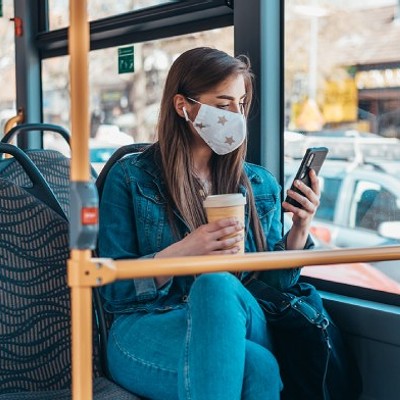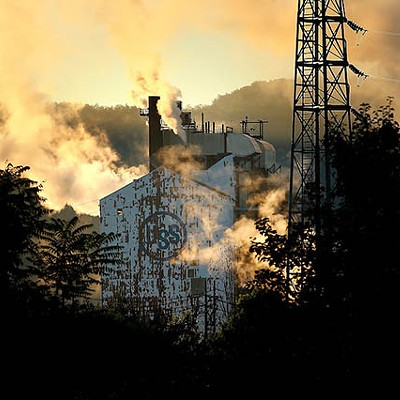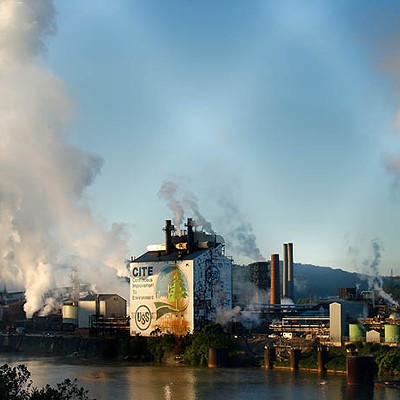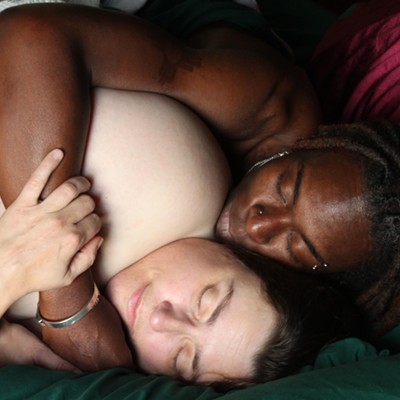Thursday, May 22, 2014
Health Department Starts Considering Climate Change
Although certain influential lugnuts still deny it, climate change is already happening, it’s getting worse, and it’s gonna hurt.
Speakers at Monday’s Climate and Health: Let's Get Prepared conference, organized by the Allegheny County Health Department, emphasized that climate change will influence most every aspect of our health, down to the air we breathe. And few of those changes are likely to be for the better.
We’re talking about not just warmer weather, or even more really hot days in summer. Also in store, for starters, is worse air pollution, more rain when we don’t want it and less of it when we do.
Those were some of the projections presented by Raymond Najjar, the Penn State oceanographer who opened the afternoon-long conference held at Pitt’s Graduate School of Public Health.
The current era of climate change is decades old, and it’s not to be confused with weather: One cold winter in Pittsburgh doesn’t disprove a long-running global phenomenon. Temperatures in Pennsylvania, and around the world, began rising around 1980. But the effect on rainfall has varied geographically. Some places are getting less rain, but in Pennsylvania, precipitation has been rising along with temperatures, Najjar said. And “the rain comes in more concentrated downbursts,” he added.
So far, the changes here have been relatively small, and our annual average of 37.5 inches of precipitation has stayed about the same. But over the next 25 years or so, says Najjar, we’ll be seeing more big rainstorms, for instance. And seasonal differences will be pronounced.
In winter, in one likely scenario, precipitation will rise by 16 inches — not in snow, which we’ll be getting less of, but in rain that’s more likely to runoff and cause flooding. And in summer, says Najjar, rainfall is likely to decrease by 4 inches. “That could have some impacts on hydrology and drought,” he said. And bad news for farms: Summer soil moisture has been declining, and will continue to. (Najjar recommended learning more on the federal government’s National Climate Change Viewer.)
How does all that affect the air we breathe? Largely, says Peter Adams, it’s because as temperature rises, so does humidity. And more water vapor means the atmosphere will turn existing pollutants into more stuff it’s bad to breathe, says Adams, a Carnegie Mellon professor of civil and environmental engineering.
For instance, ground-level ozone — or smog — will become more common. And it’ll stick around longer, too: Changes in global climate will bring to our region more high-pressure systems, which are associated with stagnation and bad air quality, says Adams. (Adams notes, however, that we could counteract the ozone increase by further decreasing emissions of the pollutants that cause it in the first place.)
We should also expect more and worse allergies and asthma attacks, added Leonard Bielory, a physician and allergist from Rutgers University. Longer growing seasons, for instance, mean more pollen. And, partly because increased exposure time can sensitize people who were not previously allergic, mild allergies could actually progress into full-blown asthma, he said.
University of Pennsylvania biologist Dustin Brisson said we should also watch out for more Lyme’s disease, because the ticks that spread it thrive with rises in winter temperatures rise and drops in summer precipitation.
Meanwhile, the heavier and more frequent rainstorms, with accompanying flash floods, will require more extensive stormwater-management systems, said Beth Dutton, of the nonprofit 3 Rivers Wet Weather. And that’s in a region that’s already in dutch with the U.S. Environmental Protection Agency for sewer overflows that put raw sewage and other pollution directly into the rivers.
Finally, Clifford Mitchell, of Maryland’s Department of Health and Mental Hygiene, offered advice on assessing the relative health risks of climate change. He argued that some risks — like heat-related mortality — are easy to overemphasize, because they’re relatively simple to deal with, for instance with better warning systems for at-risk folks. Other risks are less obvious: More extreme weather, for instance, also means more physical injuries, something hospitals ought to plan for, said Mitchell, who directs the department’s Environmental Health Coordination and Preventive Medicine/Public Health Residency Programs.
The warnings at the conference echoed those of the Obama administration’s third U.S. National Climate Assessment, released May 6. The report also noted that the Northeastern U.S. has experienced more big storms in recent decades, and warned that “heat waves, coastal flooding and river flooding” pose risks to “public health, agriculture, transportation, communications, and energy systems …”
Because climate change is the result of human-caused emissions of greenhouse gasses like carbon dioxide, how bad things get depends partly on what we do now. While the pollution we’ve already emitted locks in a certain amount of climate change, noted Penn State’s Nassar, the extent of our emissions from here on will have a big effect on the climate starting around the middle of this century.
Should we not take steps to drastically reduce emissions, for instance, we’re likely to end up with a climate like northern Alabama’s, and summers where the temperature tops 90 degrees 65 days a year (compared to 10 days over 90 now). If we do take such emissions-reduction steps, says Nassar (citing 2008 projections by the Union of Concerned Scientists, we could be living in a northern-Kentucky-like climate, with maybe 30 days over 90.
“We need to be more aggressive in our emissions reductions” and embracing renewable energy, Nassar said.
Tuesday’s conference — at which County Executive Rich Fitzgerald also briefly spoke — was organized principally by health-department board member Joylette Portlock. Portlock, a climate activist with a doctorate in genetics from Stanford University, said that with mounting evidence of climate change’s impacts, she believed the board needed to be proactive.
“We don’t want to stand by helplessly watching these things happen,” she tells CP. “Events like this one are starting to see the [benefits] of taking these climate models and applying them to the real world that we live in. … It gives us a way to have that conversation.”
Tags: Allegheny County Health Department , climate change , public health , Raymond Najjar , Peter Adams , Leonard Bielory , Dustin Brisson , Beth Dutton , Clifford Mitchell , Joylette Portlock














